A baker’s dozen of agency leaders break down the trends, pain points, and cultural influences that are impacting their strategies as well as those of their clients.
In our second annual agency insights forum, 13 healthcare agency CEOs and presidents provide their take on the trends, challenges, and opportunities that lie ahead for themselves and their clients.
Trending Now…
Agency executives are tasked with not only managing their own businesses but the businesses of their clients, which requires them to find the right talent for the job, be more agile, manage more data, accelerate timelines with fewer resources, and strategically partner around the globe.
Schirmer.
Talent is not just a challenge for us on the agency side. We are hearing from our clients that finding the right talent is a challenge for them as well. I can’t tell you how many clients have asked us to help them identify mid- to senior-level brand people. We are literally scouring our Rolodexes to find good client-side people.
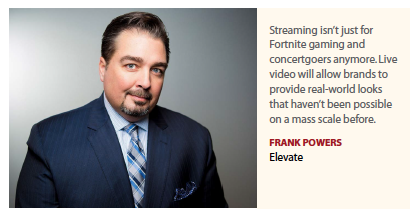 Everyone knows the data. The unemployment level for college-educated folks is under 2%. The life-sciences industry continues to explode and because of the myriad of channels we need people who can write and create through many different touchpoints, on so many different categories, and for so many different audiences. There’s a real talent battle going on right now. And in many cases, we’re all dipping into the same pool to try to find the people we need. The reality is that a lot of younger people are career jumping to take advantage of pay bumps.
Everyone knows the data. The unemployment level for college-educated folks is under 2%. The life-sciences industry continues to explode and because of the myriad of channels we need people who can write and create through many different touchpoints, on so many different categories, and for so many different audiences. There’s a real talent battle going on right now. And in many cases, we’re all dipping into the same pool to try to find the people we need. The reality is that a lot of younger people are career jumping to take advantage of pay bumps.
Companies are willing to take a risk on young talent because they desperately need to fill their positions.
The second challenge is that timelines and budgets continue to shrink. Because clients have to do more with less, so do we. Along those same lines, clients are challenging agencies to be more agile; for example let’s do a quick hackathon, disband, and then come back together, which of course works when prototyping software. It’s somewhat more difficult with healthcare communications. But the intention is to try it. Many of our clients are struggling with exactly what agile means.
Another big pain point for clients is simply defined as channel management. Channel management is increasingly complex, difficult to see, manage, understand, monitor, and succeed with. We went from a monolithic, single direction, push-out presentation model in the healthcare space to one that now reflects the consumer communication space. It’s always on. It’s multi-touchpoint. It’s one-to-one. We need to manage complex pharma communications under stringent guidelines with always-on, open architecture technology platforms. Clients are looking for their agencies to provide agility, speed, and efficiency and to manage it all.
Callahan.
Talent remains a huge challenge for the whole industry. It doesn’t feel as if there’s enough talent to go around the agency business right now. We’ve hired more than 100 people this year, which leads to a whole other challenge of getting those people acclimated to the agency’s culture and making sure they feel they are part of what we’re doing.
Another challenge that’s come to the forefront this year, is ‘agility.’ Every client, it seems, has had a consultant tell them that they have to have more agile ways of working with their 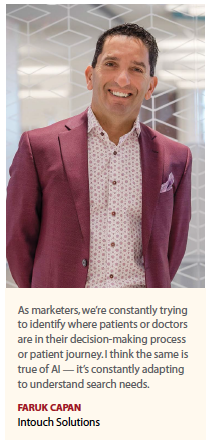 agencies. The problem is that agility is like digital or innovation, it means something different for every single client. As an agency, we need to become more agile. We know how to work in an agile way because we do it all the time on pitches. We are taking what we do to win new business and applying it to the work we are already doing for clients. We are working in small groups, focusing on a challenge in a concentrated period of time, and making change happen more quickly.
agencies. The problem is that agility is like digital or innovation, it means something different for every single client. As an agency, we need to become more agile. We know how to work in an agile way because we do it all the time on pitches. We are taking what we do to win new business and applying it to the work we are already doing for clients. We are working in small groups, focusing on a challenge in a concentrated period of time, and making change happen more quickly.
Additionally, clients are asking for an agency that is globally integrated. This also means different things to different clients. In some cases, it means ‘feet on the street’ in different countries, or the ability to get insights from those countries and to implement work in those countries. And in other cases, it’s engaging with an office in one of the client’s key regions and working with them. This ties into the trend of more global launches for high-science brands. Because specialized medicines have smaller patient populations for acute diseases, these medicines need to get to patients everywhere and as fast as possible.
Powers.
The biggest trends we’re seeing are the increasing speed of business, the pressures of cost, and access to physicians and reps. The pace of development in technology has reinforced our team’s philosophy of lifelong learning, continual improvement, and rapid adoption of emerging technology.
Mitzen.
One of the biggest trends happening is that people today have more and more information at their fingertips. People are increasingly consumers of healthcare in the same way they are consumers of other products and services. We need to make sure our clients are reaching them where they are and with the information they need.
Parisi.
First, we are living in an interesting time where more brands are playing to win — meaning we are now seeing more competitive head-to-head clinical studies, especially in oncology and more complex areas, to clearly identify the best agent to address a condition or disease. This is a courageous step for drug developers. As marketers this changes how we think about and develop market-specific and brand-specific communications — education and promotion.
So, in terms of conversations I have with clients, I tell them to have courage and be bold. Play with passion and play to win. And be clear and purposeful with your communications. 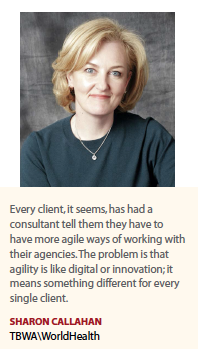 Accelerated timelines and breakthrough designations have become the norm in areas of rare disease and more complex markets such as oncology. Addressing clear, unmet medical need through innovative science is largely driving a sense of urgency.
Accelerated timelines and breakthrough designations have become the norm in areas of rare disease and more complex markets such as oncology. Addressing clear, unmet medical need through innovative science is largely driving a sense of urgency.
While this is incredibly exciting, it forces marketers to prioritize and adopt a less is more mindset. So, to oversimplify this idea, we are moving from an industry of creating ‘stuff’ to creating the ‘right stuff’ to launch products and get to market in a meaningful way.
Finally, science is moving at a break-neck speed. In some markets such as oncology, physicians have told me that the science has surpassed their ability to learn, retain, and adopt new practices. This expansion of the science, new mechanisms, and new approaches to addressing serious health issues has also expanded our creative canvas. We have never had a broader, more diverse and powerful healthcare lexicon, and this feels like only the beginning.
I’m inspired and excited by what this means to us in terms of creative range, diversity of customers, and new and emerging channels for us to consider as marketers and agencies.
Hilton.
Artificial intelligence and voice search have been two of the buzziest trends in the past few years. But blockchain has the potential to completely revolutionize the industry by fulfilling on the promise of portable patient data as well as simplifying the supply chain for pharma. Still in its early days, blockchain will play an important role. We expect it will connect brands to patients by synching up personal data with universal data — giving artificial intelligence a whole new treasure chest of data to wield.
We are looking at entry points for brands to be part of the many-faceted solutions blockchain will bring.
Weiss.
The first trend we are discussing is digitization. Healthcare has become Uber-ized and app-ified over the last five years — unlike anything seen in the previous 15 years. Our goal as a firm is to make the world a healthier place through marketing communications. And you might ask how we do that. It has never been more important for organizations to communicate clearly and effectively to all stakeholders. Our PR heritage puts us in a strong position to ensure our clients break through and tell their story.
Another trend is connectivity. In healthcare, a connected ecosystem of physician, patient, caregiver, pharmacist, and insurance provider, fueled by medical records, is the goal. In such a world, preventive care and regenerative medicine is the norm, extending life with medication and warding off disease instead of just treating it.
The future we all seek is one in which there is an open, transparent healthcare system with 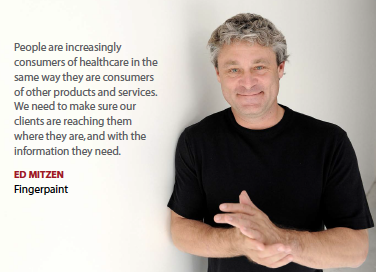 the patient at the center and information flowing freely but confidentially among health professionals with the focus on preventing disease and controlling costs through the use of medical devices, new treatments, and customized cures.
the patient at the center and information flowing freely but confidentially among health professionals with the focus on preventing disease and controlling costs through the use of medical devices, new treatments, and customized cures.
Finally, we are looking at health outcomes. Analytics is accelerating the quality of patient outcomes and causing a fundamental shift in the medical world.
Purohit.
One of the trends we are tracking are the different sources of investment that are now available. People in CSO-type roles are liaising directly with the investor set. Our role is to help these folks make decisions, and then contextualize those decisions in terms of the market itself.
We’re seeing more high-science compounds come to fruition because the scientists and innovators are closer to the business. These folks are sitting at the table, deciding where they want their targets to go, and developing the targets to go there.
Fetterolf.
The trends we’re focused on are a direct result of our client mix, which is rare-disease centric. In that world, it’s all about finding and engaging patients early, sometimes several years pre-approval. We’re experimenting with novel ways to do this, from advocacy partnerships, research engagements, or even the creation of new communities to bring patients, caregivers, and families together. These communities can serve as a cultural incubator, offering information and inspiration for patients, while helping our client 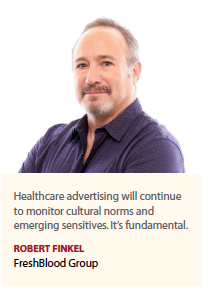 partners and the agency better understand the community’s unmet needs and fostering empathetic connections, while also developing a deep understanding of the unique patient lexicon. As the investigational therapy progresses through phases of approval, so too does our knowledge of the stakeholder landscape. So when it comes time to transition to a branded dialogue, we are all fluent in the culture of a condition and can effectively speak in the patient’s language.
partners and the agency better understand the community’s unmet needs and fostering empathetic connections, while also developing a deep understanding of the unique patient lexicon. As the investigational therapy progresses through phases of approval, so too does our knowledge of the stakeholder landscape. So when it comes time to transition to a branded dialogue, we are all fluent in the culture of a condition and can effectively speak in the patient’s language.
Hilton.
When we talk to our clients about their greatest challenges for this year and going into 2020, we hear two common themes: the need for agile workflows and the importance of proactively connecting all the dots of a multi-channel campaign. The pressure has not lessened over the years with the addition of so many technological advancements. If anything, it’s made a launch more complex. These days, clients have multiple communication partners; and often, all the tentacles of the octopus aren’t aware or aligned with one another. Clients want their lives to be made simpler, not harder.
Finkel.
In short order, FDA uncertainty, balancing culture with rapid growth, limited physician access, budget constraints, and identifying the right strategic and creative partners are the biggest challenges. We focus primarily on helping entrepreneurial startup companies navigate the expected and unexpected twists and turns on the path to commercialization. Contingency planning is key, as is having a rock-solid team with the fortitude to weather any storm. Naturally, clients need to continuously remain agile, action-oriented, and mentally resilient. No matter what the pain point or temporary setback, the mantra must always be “we got this."
Viviano.
As a new healthcare agency, our model may be slightly different from others in that we interact with the most senior-level clients. For example, in all of our client assignments we interact routinely with the CEO. What our clients want in an agency partner is a team who is completely and thoroughly intimate with their brands and who have the ability and expertise to react and make decisions in real time. We have found that the only way to do this is to put senior people in all of our key rolls. Many of our clients are smaller biotechs  companies that are just moving into the commercialization phase of their life cycles, and as such, another pain point for them is that they don’t have all their key positions fully staffed up themselves. They look to us to operate as an extension of themselves.
companies that are just moving into the commercialization phase of their life cycles, and as such, another pain point for them is that they don’t have all their key positions fully staffed up themselves. They look to us to operate as an extension of themselves.
Powers.
There are several pain points. Some are business related, but most are about the type of creative work clients want for their brands. The perennial challenge raised by our clients, and I’m sure it’s industrywide, is the need to hit higher sales and dollar volume forecasts with shrinking ad budgets in shorter timeframes. This is happening across all brands, in bigger pharma, biotech, and device companies.
Another thing we hear often, particularly from newer clients, is about the variable levels of creativity they see from their partners, and the obstacles their brand teams face getting out-of-the-ordinary marketing approaches approved within their organizations. On one hand, they tell us they want to get away from the beaches, bubbles, and balloons of traditional pharma advertising. They say they want fun, breakthrough, differentiating work. On the other hand, they tell us their organizations are turning to more conservative work.
The challenge is preventing them from backsliding into the familiar, clichéd healthcare marketing executions — stock patient shots and logo swooshes, with the typical tactic toolbox. Despite their aspirations for earth-shattering creative, they face a multitude of challenges, both internally and externally, that can hold their brand back from achieving the full messaging and sales potentials.
Weiss.
Our clients are grappling with access and pricing capabilities both in terms of policy and communications. We help clients communicate about the prices of their treatments, but we want to have a greater influence on how they price them in the first place and how they communicate that value to patients, physicians, payers, and other influencers.
Mitzen.
There is an abundance of data available to clients, actually to all of us today. But, if 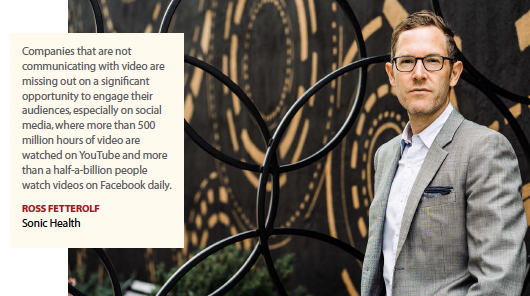 companies don’t know how to granularly dig into it to develop insights, then it is useless. Our clients are asking us to help them make sense of that data to help them make more meaningful human connections for their brands.
companies don’t know how to granularly dig into it to develop insights, then it is useless. Our clients are asking us to help them make sense of that data to help them make more meaningful human connections for their brands.
Parisi.
Time and money — aka ROI — are big pain points. Marketers are working under incredible pressure and time constraints. This, coupled with the fact that their markets and business challenges are more complex than ever before, is making their jobs quite challenging.
Shifting gears, a bit, our clients often discuss how to get more of their customer’s time and attention. ‘Slowing down to get smart’ is something that we hear quite a bit on an ongoing basis. Our clients have tons of raw data — outside of clinical data — but what does it all mean and what is this data telling us and what actions can we take based off this information? More important than the raw data, what are the insights and how do we translate this into actionable strategies?
Most of our clients have in-house analytics teams, but the teams are small and reactive at times or prioritized to focus only on the high revenue products.
Generally speaking, I’ve often heard clients lament that they’re not ‘wowed’ enough by their agency. The good feeling fades shortly after the pitch ends and the engagement begins. The pitch is like the first date — you get introduced and are wowed in the initial meeting but it’s the daily chemistry that creates an enduring relationship.
One element that I believe, and often hear from clients is ‘ownership’ of the brand, the business, and the business results. Clients want the agency to own the brand, the situation, and the results as much as they do but often forget to include us in business updates, sales tracking discussions, and quarterly business reviews. To our clients: sharing the results on a regular basis and baking brand performance into your regular discussions helps to create a feeling of ownership.
Fetterolf.
The biggest pain point that we hear from clients is wanting more strategic thinking on their business. Specifically, clients often lament their large agency partners when the ‘A-Team’ that helped win the pitch gets quickly replaced with a larger and less strategically minded support staff.
Another pain point that we’ve seen is in the area of patient engagement in social. It’s not uncommon for advocacy organizations to find pharma’s forays into platforms such as Facebook unwelcome, where pharma’s seemingly bottomless advertising dollars can divert audience attention to new, pharma-sponsored online communities, posing what they feel is a threat to their ability to conduct critical fund-raising activities that are the lifeblood of their organizations. Finding appropriate ways to partner with advocacy remains a constant challenge, and something that requires a unique combination of experience, relationships, and sensitivity — skills that many agencies struggle to either develop or appreciate.
A Cultural Shift
Huggies recently put a Dad on its box for the first time. This is just one example of how current cultural trends are shifting marketing. The pharmaceutical industry is shedding its once conservative approach to marketing by appealing to real people through increasing the use of diverse and nontraditional patient segmenting.
Hilton.
Advertising may lag in cultural trends, but it always catches up. Recently, audiences have seen television ads with a more diverse cast to reflect shifts in the makeup of the family. Because much of healthcare advertising is about the individual patient and his or her condition, any nod to the new culture has so far been mostly an accent within the creative. However, the doors are wide open now, and brands know that they are in a safer place than before. In many ways, the creative handcuffs have been unshackled. This is good news in an industry where creativity already has several constraints and uphill battles.
Viviano.
There is a debate about whether good advertising should lead and be ahead of cultural trends, or whether it should accurately reflect cultural trends. We believe that good advertising, whether it is geared toward HCPs or consumers, should reflect what is going on in the culture. That way, when people see an ad, they can see themselves — or in the case of physicians, the people they treat — in it, relate to the messages, and it makes sense to them. A father on a Huggies box is an example of that. There are plenty of dads who are the primary person who purchases diapers and are involved more and more in childcare, so it makes sense. We will certainly make sure our clients are aware of and shift appropriately to new trends when they make sense for their business.
Mitzen.
The idea of gender or gender roles is a major shift that is happening. We must not make assumptions that women want certain things and men want certain other things, or that a woman’s role is one thing and a man’s is another. The younger generation today does not have a sense of gender in the way that we thought of it in the past.
Callahan.
Culture is very important in driving brands, especially with social media.
Companies have to be in a culturally relevant space with their promotion.
One trend I’ve seen lately is what we call ‘ageless,’ meaning people are not measuring their lives in years anymore. They’re measuring their lives in milestones. It makes sense; it’s not just the older population. There are 10-year-old CEOs who are making millions of dollars  on YouTube, there are 30-year-old CEOs retiring. The meaning of age, or the milestones that correlate to age, have changed in the blink of an eye.
on YouTube, there are 30-year-old CEOs retiring. The meaning of age, or the milestones that correlate to age, have changed in the blink of an eye.
This is in line with what we are seeing in terms of gender fluidity. People don’t want to be defined by how society describes them. This shift has us leaning into data for different insights. We have to speak to audiences in ways that they see themselves.
Weiss.
The rise of the millennial patient/consumer has started to change the landscape dramatically. They care more about purpose-driven brands and, as expected, spend more time on social media than previous generations. They also place more of a premium on experiences versus owning possessions.
These trends all impact the messaging and the channels within which advertisers can reach patients for new clinical trials. It also impacts physicians — nearly a quarter of whom are now millennials — and how they allow themselves to be marketed to.
Powers.
Culture is more important than ever. Healthcare advertising is shifting because the hardest thing in healthcare marketing is making it relatable to a diverse patient audience. Is this generic stock photo approach and expected ad concepts going to connect with a more diverse audience? Diversity and inclusion are of high cultural importance, and that’s who’s out there and who our messages are trying to reach. Nobody is invisible anymore.
Before we work on any disease state we dive in for a background on the audience, including the demographics, psychographics, and their true inner minds. The advertising and marketing industry is adjusting to the reality of our marketplace and our audiences instead of the other way around. We must be on the forefront of that shift in healthcare marketing.
Parisi.
Social media has ripped the lid off of healthcare communications across all topics. The idea of individuals saying ‘you can’t edit me’ just means that we need to be authentic. Customers want brands that get them. People want to be communicated with, engaged with, and endeared by brands that reflect a genuine interest and understanding of who they are as people.
So, if that dad on the Huggies box connects with other dads, reflecting a cultural truth about the customer is fantastic. We live and work within a very intimate and personal topic, health. So, we are privileged to connect, listen, and share time and information with people that often are going through challenging times.
More empathy, more realness, and more understanding of our end customers is a breath of fresh air. The early HIV work by companies such as GlaxoSmithKline and Bristol-Myers Squibb and community publications by groups such as POZ and Act Up broke the mold for the industry. There are lots of lessons to learn from those courageous marketers for sure.
Finkel.
Healthcare promotion has always been attuned to cultural trends and audience sensitivities, despite the occasional off-target or off-color campaign effort. Mining for customer insights from which to build a brand identity is a foundational strategy.
Whether crafting a culturally sensitive narrative that resonates with customer sentiment or accurately portraying the healthcare brand’s perfect spokes-patient (i.e. Huggies featuring 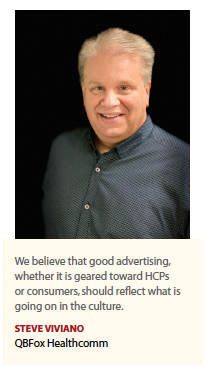 the ‘involved and evolved’ dad on its box) strengthening brand equity is the main point. That’s nothing new. Healthcare advertising will continue to monitor cultural norms and emerging sensitives. It’s fundamental.
the ‘involved and evolved’ dad on its box) strengthening brand equity is the main point. That’s nothing new. Healthcare advertising will continue to monitor cultural norms and emerging sensitives. It’s fundamental.
Fetterolf.
Culture is an obsession at Sonic; we’re placing it at the center of all our engagements with patients. We view each condition as being its own country, so to speak, having a unique landscape, language, and laws — and we make it our mission to understand the critical elements of a patient culture before we engage. We learn the language — both the words people use to talk about their disease, as well as how they communicate with others about it. We identify the symbols, finding the images and concepts that have a deeper meaning. We understand the values, the shared beliefs, challenges, and needs that define a patient’s experience living with a condition.
We work with clients to develop a travel-guide — something to help their organization better understand and engage with a patient community. This includes maps of the treatment landscape, an overview of the signs and symbols most frequently used and their meaning, verbatims from patients who speak the condition, tours of previous pharmaceutical campaigns, and lots of other guidance for navigating the specific health condition. This approach has helped organizations ensure that they honor a community’s traditions when entering into these foreign lands. Let’s face it, no one wants to be seen as the loud, obnoxious American tourist trying to get the guards at Buckingham Palace to flinch.
Schirmer.
We are definitely seeing more diversity in casting across the board. But what I’ve been really intrigued with is the ‘real’ people trend, non-actors, actual doctor-patient representatives. There is a desire by clients to move beyond central casting and have advertising that reflects the people who are actually living in our patient communities.
This is an incredibly positive trend. It’s a shame it’s taken so long to get here, and there is still a ways to go.
Purohit.
Patients are much more involved in the commercial process. They’re having conversations, helping us promote brands. So we need to make sure we’re representing these different 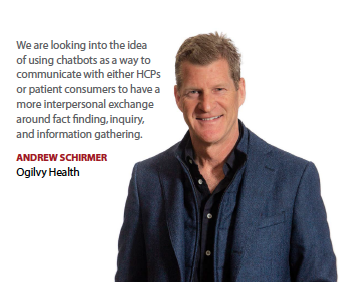 patient groups appropriately, and get more specific about how we communicate to them. This approach involves targeted messaging that reflects patient, clinician, and end-user subgroups.
patient groups appropriately, and get more specific about how we communicate to them. This approach involves targeted messaging that reflects patient, clinician, and end-user subgroups.
Tobias.
One of the greatest fundamental shifts taking place in our industry is the maturation, sophistication, and strength of the empowered patient. Yes, healthcare provider disease and product education is absolutely essential for delivering appropriate and timely care, but the patient’s desire to share in the responsibility of decision making and treatment choice has increased dramatically.
This is especially true, and even more pronounced, when it comes to patients living with rare diseases. Patients with rare disease — and their caregivers/partners — have formed incredible social networks that provide support to other patients and families who are faced with similar battles. Patients have lobbied successfully for congress to provide more funding for research and development, and have even helped FDA review committees to recognize the importance of approving new orphan products for diseases once not thought possible to treat. Most importantly, we have seen a rise in the willingness of patients to advocate for themselves.
Our mission during this important shift in our industry is to find ways to support rare disease patients through all aspects of their journey. We also strive to help healthcare providers understand that by working together with patients and caregivers, they will not only strengthen their ability to provide hope for rare disease patients, but will also be able to achieve better outcomes than they ever could have imagined.
Channel Surfing: Digital is Here to Stay
Digital Marketing World has predicted that by 2021, 13% of all Internet traffic will consist of live video. And that is just one chunk of the whole video gamut. With almost every major social media platform now supporting live video streaming, it is only expected to soar in 2020.
Capan.
It’s true that search is a very big component in pharmaceutical marketing. In fact, a recent report from the Pew Research Center stated that 80% of Internet users, or about 93 million Americans, have searched for a health-related topic online. As marketers, we’re constantly trying to identify where patients or doctors are in their decision-making process or patient journey.
I think the same is true of AI — it’s constantly adapting to understand search needs. AI certainly doesn’t have to be limited to being a reminder tool for taking medications or attending doctor appointments; instead, as a user asks questions, there should be a seamless experience so they don’t have to push buttons or go through several websites to get an answer.
While AI has been around for a while, it’s been challenging for the pharma and other industries to find practical uses for the technology. This has been changing now, however. The AI technologies that have seen meteoric rise recently are deep learning, NLP, and robotic process automation (RPA). In combination with these AI technologies, implementations such as chatbots can provide much more than just FAQ-type responses and medication reminders. These technologies can allow chatbots, for example, to truly become virtual assistants and other AI implementations to be much more practical and useful as well.
Ultimately, AI is still growing in its capabilities, and though it’s already helping identify search results, the goal is to get answers faster, not just get search results faster. The availability of conversational options will probably increase, and we’ll continue to learn more about what our audiences need and adjust our approach over time to meet those needs. There is a lot of training that’s necessary, and especially in the pharma space, regulatory constraints limit what we can do. For example, if someone is searching for information about a popular new diet, there’s no real ‘wrong’ answer, and probably no life-or-death risk, but in the pharma industry, a ‘wrong’ answer to a patient’s or doctor’s question about a medication could literally mean the difference between life and death. Yes, there are constraints, but we’re very excited about AI’s potential in the pharma and healthcare space.
Schirmer.
Video is a medium and a channel depending on the context. We know that today YouTube is the second-largest search engine. And it’s the No. 1 search app with more than 4 billion searches per month for content in the United States alone.
About 10 years ago, Sir Martin Sorrell said during a keynote address, “that we may be facing a time coming in the near term where more of the people who we need to reach are no longer reading things online. These are people who will be watching things online." He was prophetic.
We need to be able to invest in, craft, develop, and produce good quality video content, and we need to understand, as always, the purpose of the content and the intended outcome. The other thing we need to consider in conjunction with video is mobile technology. Because so many YouTube searches are happening on someone’s phone, we need to know how people are engaging with the content. There’s no question video is hot. In 2015, in the United States people were spending about an hour a day looking at digital videos. Today, it’s more than an hour and a half. And 23% of that time is on their phones.
Even though we are media agnostic and we’re channel agnostic, this trend will continue to change how we approach the channel. At the start, we work backward from the current behaviors of our audience. We look at the patient journey, the consumer journey, and we look at the intersections between the two. We also look at how people are seeking information, and then how they’re being influenced.
Purohit.
I don’t believe the industry is leveraging digital channels as aggressively as we could or as strategically as we should be, frankly. There is a lot of peripheral advocacy happening on these channels that we’re not involved in. We need to understand and galvanize the idea of self-advocacy.
Patients and even providers are talking to one another offline, separate and apart from our messaging. And although this dynamic has always been there, because of digital channels people have much more accessibility to one another now.
Patients are watching videos online to help them differentiate between credible and noncredible sources of information. I think there’s a role for healthcare agencies in this regard, but I don’t know that we have figured it out yet.
Digital is a tremendous channel that could drive so much change. The challenge for patients isn’t always deciding which product is right for them; it’s how to make the product fit into their life. Digital can be a way to address peripheral issues around compliance, managing side effects, etc. in a much more credible and effective way.
Mitzen.
The rise of live video is an amazing opportunity for healthcare marketers. Video is such a powerful way to connect and tell a story. And in healthcare, which is so fraught with emotion, it allows us a great way to capture that humanity.
Finkel.
From a promotional point of view, live video is a powerful medium that invites new opportunities to be creative and more impactful to get your message out. However, from a legal and regulatory standpoint, live video streaming spells nothing but complications, depending on what message is being sent and how it’s being used. Social media, by definition and design, is open source and not easily controlled, and much less well-monitored. Ask Facebook and Twitter about that. By contrast to the rest of the ad world, almost every message a healthcare company puts out must be pre-cleared — as we all know the risk of a misstep is just too high a price to pay.
Also, privacy violations are another likely sand trap. While there will be opportunities to properly package and cautiously channel live video in the healthcare space, we are nonetheless operating in a heavily regulated industry where hard and fast rules must be obeyed. There is very little appetite for attracting negative attention from the FDA or tempting a competitor to blow the whistle on what they could perceive as a violation. We will find ways to leverage live video, but we need to think strategically and act soberly.
Weiss.
Live video is not only a powerful tool, but it’s likely to become more prominent over time. This will force pharma companies that haven’t yet established the proper SOPs for all things social, including live video, e.g., Facebook Live, to quickly jump on the bandwagon.
Live video can create stronger, more relevant and meaningful engagement between patients/caregivers, healthcare professionals, advocacy organizations and the creators of novel therapies. What better opportunity than to shift the approach from reacting to what others have done to shape the narrative, to hosting and/or moderating the conversation in a disease state or therapeutic category.
Given how powerful the medium can be, the pharma industry needs to be prepared to deal with crises in a very different way. Live video happens at the speed of social and, as such, all companies, pharma included, must be prepared to react and engage.
Callahan.
Companies will need to get on board with all of the different channels that are available and emerging. It’s not just YouTube, Google, and Facebook; we have many different types of partnerships with other media outlets. For example, we have a new partnership with Twitch, which is a live-streaming platform owned by Amazon that puts out short bursts of information. We also have a partnership with iHeartRadio. Radio is an old medium, but it’s never been more popular, and it’s not heavily used by pharma.
The issue with all of these channels and with video is the brand safety issue. Also, it’s essential to make sure the brand is represented in the right context on the right channel.
Powers.
Live video will continue to soar as phones, cameras, and networks keep popping up where people live their digital lives. It will soon be impossible to avoid live streaming. Streaming isn’t just for Fortnite gaming and concertgoers anymore.
Live video will allow brands to provide real-world looks that haven’t been possible on a mass scale before. Wider access means more opportunities for symposia, conferences, and conventions. Social media teasers will ‘go live,’ driving interest in booths and experiences. Integrating technologies, including virtual and mixed reality, means anyone could be front row for a keynote while sitting in their home office.
Live video builds excitement in real time and engages people instantly. The possibilities are endless. It can capture the feeling of community that patients seek and brand teams have only dreamed about providing for physicians and patients. Patients giving live testimonials can be showcased to create reality advertising as authentic as it has ever been.
Hilton.
The explosion of video is a great opportunity for pharmaceutical advertising. The more patients and physicians can speak to conditions and treatments, particularly on camera, the more engaged others will be. However, with every positive input, there will be the potential for negative, perhaps even false, claims. Pharma needs to be ready for the video boom to continue and shouldn’t go into video with a one-off mentality. Content may be king, but it’s the ongoing conversations that will reign supreme.
Fetterolf.
I remember the early days of pharma videos, a world filled with patient testimonials and drug MOAs. These were perfect to feature at a conference, but questionable for brand websites because most people did not have the bandwidth to watch them, both in terms of technology and attention. Fortunately, the technology has evolved, and we can now stream live events in 4K on almost any device, anywhere.
So today video is no longer a nice-to-have, but a necessity. Companies that are not communicating with video are missing out on a significant opportunity to engage their audiences, especially on social media, where more than 500 million hours of video are watched on YouTube and more than a half-a-billion people watch videos on Facebook daily.
Despite these staggering statistics, we find that the approach to video production by pharma companies has not evolved as much as the technology that enables people to consume them. A majority of companies are still producing horizontally-formatted videos with high-production values and long run times — content that does not align with what today’s social media audiences want to consume. Being a compelling storyteller means aligning content production to the expectations of the channel, and that means finding a way to strike a delicate balance between energetic and educational, perfunctory and poignant, and most importantly: being authentic.
Alexa, Siri, Are You There?
The rise of conversational artificial intelligence (AI) — digital assistants and chatbots — has changed the search landscape. Analysts say by 2020, 50% of search queries will be voice searches.
Schirmer.
Google’s voice recognition is more than 95% accurate. So voice search is quickly replacing type search. Much of the same guidance that we currently have in place for type search will influence voice search in a similar way. We have a group of folks at the agency who are examining how language influences what we hear, how people talk to one another, how KOLs influence their constituencies, and so on. We have the ability to analyze and determine the right words to use to drive the appropriate discussions.
AI will continue to grow in healthcare, and we’ve already done pilot programs with some of our clients. We are looking into the idea of using chatbots as a way to communicate with either HCPs or patient consumers to have a more interpersonal exchange around fact finding, inquiry, and information gathering; the communications would go through the same protocol of approval that we do for any print piece or website content. We literally can have an animated person, a human face with voice that gives a more human response that can react to exactly what patients want and get them the answers they need.
Fetterolf.
‘Hey Siri, I was just diagnosed with ornithine transcarbamylase deficiency; what do I need to know?’ Probably not a search that’s trending. ‘Hey Siri, can you dial the patient-support line for Product X?’ That’s more like it. If well-executed, voice assistants or chatbots can help a user accomplish a task efficiently — saving them time, everyone’s most valuable resource. Chatbots, in particular, may have tremendous application when applied to patient services, REMS programs, or everyone’s favorite website feature, FAQs. They may serve as a viable alternative, or eventual replacement, for call center services. They can be always-on and better align with the needs and expectations of patients who don’t plan their 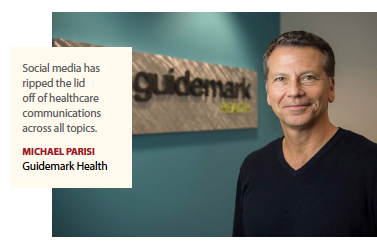 lives around a company’s support line hours. We’re keeping an eye on how this world evolves, but still being mindful that the world of health and medicine is an emotional one, where real, human one-to-one connections will always have a place.
lives around a company’s support line hours. We’re keeping an eye on how this world evolves, but still being mindful that the world of health and medicine is an emotional one, where real, human one-to-one connections will always have a place.
Callahan.
We are working with chatbots as well as incorporating Alexa for a number of clients. The real challenge, in this highly regulated medical-legal system, is to have an authentic voice. Chatbots have to talk like a person. It’s not about pushing advertising out or about using a chatbot to relay the full disclosure or product insert information. This does not work. We need to incorporate real language that people expect to hear. People expect a chatbot to be a real person. We need to create the right and authentic experience. Pharma is going to have to get up to speed very quickly.
Powers.
The growth of AI is going to be fast and the technology is going to be ubiquitous. This will be a bit challenging for pharmaceutical agencies to adapt. Our goal is to always provide information that shapes thinking, and this technology is coming to serve as a first-response source of information. Chatbots will change the game regarding critical messaging at the tip of the spear in a coordinated messaging effort.
We’ll all need to work smarter and find more creative ways to use AI to break through and to influence AI that may run counter to our clients’ campaign efforts. Chatbots are a huge factor moving forward because they are on demand and they learn.
The hesitation to adopt this technology is real in pharma, because there’s the risk that a chatbot learns the wrong messages. One example is Microsoft’s Twitter bot Tay, which was corrupted by users within 24 hours of its launch. There are some smart hackers out there who can make things go wrong quickly. For every well-intentioned idea on the Internet there’s the chance for another Tay Bot or Boaty McBoatface scenario, where the people on the Internet dictate what happens.
We will not put ourselves, or our clients, in a position of losing control of messaging. It’s why we have to always be thinking ahead. We can take what a patient is actually looking for and craft something specific to help them. If done right, a chatbot can fetch help or answers on demand without the risk of corruption.
AI and chatbots also can help with adherence and be a more welcomed source than a push notification. Imagine a pleasant Australian-voiced AI companion helping a patient stay on top of a dosing schedule, managing concomitant medications, or sharing a helpful to-do list. That’s just scratching the surface of where it will go.
Weiss.
Voice assistants and the corresponding AI behind them will change the way people engage with all brands, pharma included. The stats for the 50-plus age group alone demonstrate a particularly fast-moving demographic embracing conversational user experience (UX). Pharmaceutical advertising can learn a lot by looking back at other analogues over the past couple of decades, such as mobile apps when all companies and brands thought they needed an app for that. What we’ve come to realize is that isn’t the case.
Rather, the best mobile apps are those that use the native features of a device to make the 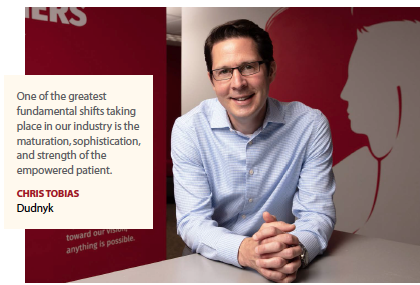 experience more seamless. The same holds true for voice technology. In particular, voice technology is best used to make simple experiences more frictionless.
experience more seamless. The same holds true for voice technology. In particular, voice technology is best used to make simple experiences more frictionless.
For example, the process for registering to fill and/or refill medication online can be time consuming and require the use of a keyboard and monitor given the amount of information needed.
However, once the technology behind such a system is established, leveraging a voice skill to tell Alexa to refill your medication is an entirely different experience. It is these smaller opportunities where we will see voice tech provide incremental benefits.
Moreover, similar to what we experienced with responsive and adaptive website design 10 years ago, brands and companies must start to define what the conversational UX will sound like for those searching, and finding, their destinations using voice tech vs. visual browsers.
Healthcare is the number one consumer product and will continue to be increasingly marketed as such. Therefore, we need to help the biopharmaceutical industry market and partner most impactfully in this reality and make it increasingly automated and intuitive all while ensuring security and privacy. Amazon will change the game, and we are committed to keeping up and staying ahead for our clients in this regard, automating what we do more and more.
Hilton.
Voice search is where the new battleground is. Physicians and patients alike will turn to their virtual assistants and ask for treatment guidance as well as brand recommendations. 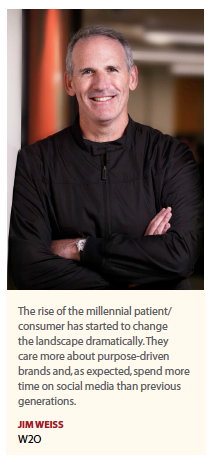 Additionally, they may only get the top three responses delivered in voice search instead of a full page of Google results. This means that companies will pay big dollars to be in that top tier. And since so many drugs have unique names and pronunciations, it’ll be important that doctors, other healthcare professionals, and patients know how to pronounce the product properly.
Additionally, they may only get the top three responses delivered in voice search instead of a full page of Google results. This means that companies will pay big dollars to be in that top tier. And since so many drugs have unique names and pronunciations, it’ll be important that doctors, other healthcare professionals, and patients know how to pronounce the product properly.
All of this is just another way that personal media will become even more interconnected. A television ad leads to a voice search, which leads to a prescription, which leads to real-time data recorded onto a watch and uploaded to medical records. Voice search will become another part of the patient-physician dialogue.
Purohit.
Together as an industry, we need to find the appropriate role chatbots and AI can play in motivating patients to seek care from a professional.
We’ve worked so hard over the last decade to support linkages to care so patients can get the prescription they need. And often the solution is a human solution.
What happens when we remove the human piece? How do we link to care?
What happens when a patient goes to see a clinician with a proposed diagnosis already? Does this impact the decision making and/or the diagnostic process that a clinician goes through? Research shows us that it does, in the same way that when a patient requests a specific medicine, the physician grants the request around 70% of the time. This stands true for diagnoses as well. (PV)



















